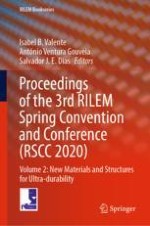2021 | OriginalPaper | Chapter
Pore-Scale Numerical Modeling Tools for Improving Efficiency of Direct Carbon Capture in Compacts
Authors : Ravi A. Patel, Nikolaos I. Prasianakis
Published in: Proceedings of the 3rd RILEM Spring Convention and Conference (RSCC 2020)
Publisher: Springer International Publishing
Activate our intelligent search to find suitable subject content or patents.
Select sections of text to find matching patents with Artificial Intelligence. powered by
Select sections of text to find additional relevant content using AI-assisted search. powered by
